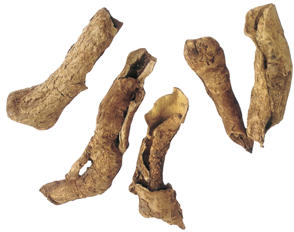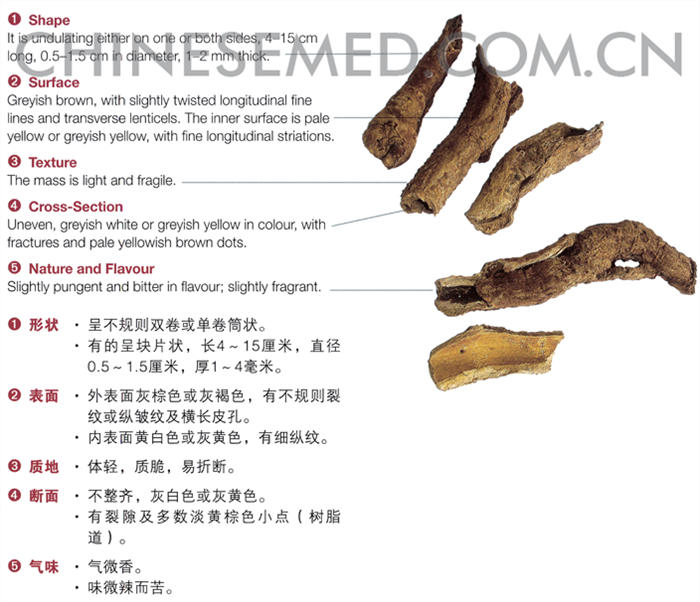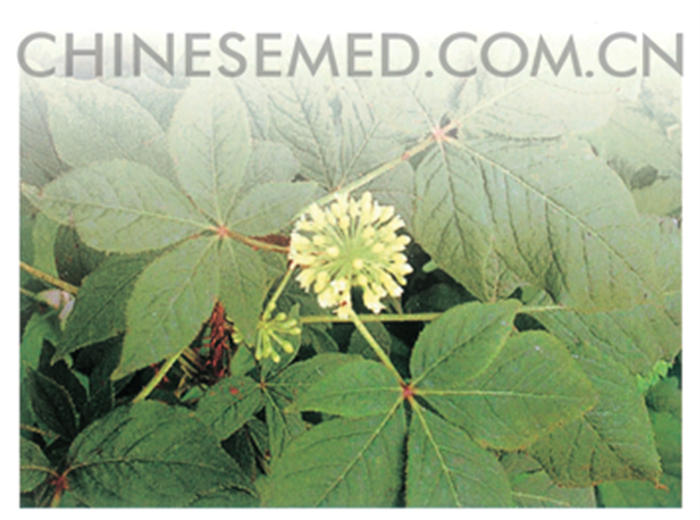

Source Acanthopanax Root Bark is the root cortex of Acanthopanax gracilistylus W.W. Smith, or stem cortex of A giraldii Harms, (Fam. Araliaceae.)
Producing Areas Hubei, Henan and Anhui, etc. The best is produced in Hubei, which is called Nan Wujia (South Wujia).
Properties Spicy, Bitter, Warm
Channels Liver, Kidney
ACTION
- Dispels wind and dampness in Bi syndrome, strengthens tendons and bones
- Treats deficiency in the liver and kidney For muscular spasm, pain and cramps due to deficiency. Also for weak and sore lower back and knees.
- For elderly, or children with weak bones and tendons
- Alleviates dampness and swelling in the limbs resulting in feeble gait
- Relieves water retention in the face and body, and pain in urinating (dysuria)
- For edema in limbs of cold-dampness type
- For threatened miscarriage with vaginal bleeding arising from yin deficiency of the liver and kidney
Usage and Dosage
4.5–9 g is used in decoction for oral use, or in pills, powder or soaked in spirit.
Notes Use with caution in the person with hyperactivity fire due to yin-deficiency.


Storage
Keep in a dry place, and protect from mould and moths.
Description of Quality Herb
The good one is thick, fragrant, and greyish white in the core.
Professional Tips
Identifying South Wujiapi and North Wujiapi
Source: Wujiapi, called South Wujiapi, is the dry root cortex of Xizhu Wujia (Acanthopanax gracilistylus W.W. Smith). Xiang Wujia, called North Wujiapi, is the root cortex of Gangliu (Periploca sepium Bge.)
a.The source of Wujiapi recorded in ancient pharmacopoeias is from the root cortex of plants from the family of Araliaceae.
b.The medicinal materials of Wujiapi used nowadays include South Wujiapi and North Wujiapi. The source of South Wujiapi is from plants in family Araliaceae. The source of North Wujiapi is from the root cortex of Gangliu (Periploca sepium Bge.)
Action: South Wujiapi has actions of anti-inflammatory, anti-fatigue, anti-stress, anti-radiation, and can enhance immunity, adjust blood pressure, and lower blood sugar. It has anti-tumour and anti-diuretic properties. North Wujiapi has the actions of strengthening the heart, with diuretic, anti-inflammatory effect, but it is toxic. The side effects are nausea, vomiting, and other gastrointestinal reactions, and it can also lead to congestive heart failure and even death.
Identifying Wujiapi and Mugua (Fructus Chaenomelis)
Similarities: Both can treat Bi syndrome of wind-dampness type.
Differences: Wujiapi is for strengthening the tendons and bones. Mugua is for relaxing the tendons.


